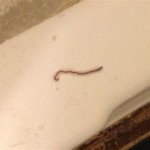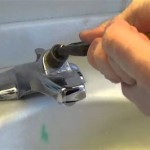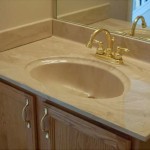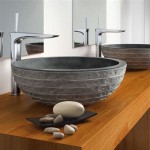Grohe Bathroom Sink Faucet Repair Kit: A Comprehensive Guide
Grohe bathroom sink faucets are renowned for their quality, durability, and design. However, like any mechanical device subjected to regular use, they can experience wear and tear over time. Replacing a Grohe faucet can be a significant expense, making the use of a Grohe bathroom sink faucet repair kit a more cost-effective and practical solution. This article provides a comprehensive guide to understanding, selecting, and utilizing Grohe bathroom sink faucet repair kits to address common issues and restore faucet functionality.
Understanding the components of a Grohe bathroom sink faucet is crucial before considering repairs. These faucets typically incorporate various parts, including cartridges, O-rings, aerators, handles, and spout assemblies. Each component performs a specific function, and failure in any one area can lead to common problems such as leaks, drips, reduced water flow, or difficulty in controlling water temperature. Identifying the specific problem and the affected component is the first step in a successful repair.
Grohe offers a range of repair kits designed for specific faucet models and common problems. These kits generally include replacement parts, such as O-rings, cartridges, seals, and occasionally, small tools to facilitate the repair process. The availability of these kits underscores Grohe's commitment to providing long-term support for its products, allowing users to extend the lifespan of their faucets and avoid costly replacements.
Identifying the Problem and Selecting the Correct Repair Kit
The initial step in any faucet repair is to accurately diagnose the problem. A persistent drip, for example, can often be attributed to a worn-out O-ring or a faulty cartridge. A reduction in water flow might indicate a clogged aerator or a build-up of sediment within the faucet's internal mechanisms. Difficulty in controlling water temperature often points to a problem with the cartridge, which regulates the mixing of hot and cold water.
Once the problem has been identified, the next step is to determine the specific Grohe faucet model. This information is typically found on the faucet itself, often near the base or underneath the handle. Having the model number is essential for selecting the correct repair kit because each kit is designed for specific faucet models. Using an incorrect repair kit can result in improperly fitting parts, leading to ineffective repairs and potential damage to the faucet.
Grohe's website and authorized retailers provide resources to help identify the correct repair kit based on the faucet model and the nature of the problem. Online parts diagrams and exploded views can be particularly helpful in identifying the specific component that needs replacement. These resources also offer detailed product descriptions, including the models the kit is compatible with and the parts included in the kit.
When selecting a repair kit, it is crucial to ensure that it includes all the necessary components for the specific repair. Some kits may contain a comprehensive selection of parts, while others may be more targeted towards addressing a specific issue. Carefully review the contents of the kit to ensure that all the required replacement parts are included.
Essential Tools and Preparation for Faucet Repair
Before embarking on a faucet repair, it is essential to gather the necessary tools and prepare the work area. Having the right tools on hand will make the repair process smoother and more efficient. Basic tools typically required for faucet repair include a set of adjustable wrenches, screwdrivers (both flathead and Phillips head), pliers, a basin wrench (for removing the faucet from the sink), and possibly a specialized cartridge removal tool, depending on the faucet model.
In addition to tools, some other essential supplies include a small container to hold small parts, such as screws and O-rings, to prevent them from being lost. A clean cloth or towel is also necessary for wiping up water and cleaning components. Plumber's grease can be used to lubricate O-rings and cartridges, facilitating smooth operation and prolonging their lifespan. White vinegar can be used to soak and clean mineral deposits from faucet components.
Before beginning the repair, it is crucial to turn off the water supply to the faucet. This is typically done by closing the shut-off valves located under the sink. If shut-off valves are not present or are not functioning properly, the main water supply to the house may need to be turned off. Once the water supply is turned off, turn on the faucet to relieve any residual water pressure.
Protecting the sink and surrounding area is also important. Place a towel or cloth over the sink to prevent scratches or damage from tools. Ensure that the work area is well-lit to facilitate clear visibility of the faucet components. Having a clear and organized workspace will significantly improve the efficiency and success of the repair.
Step-by-Step Guide to Replacing Common Faucet Components
Once the problem has been identified, the correct repair kit has been selected, and the necessary tools and preparations have been made, the actual repair process can begin. The specific steps involved will vary depending on the faucet model and the component being replaced. However, some general guidelines apply to most Grohe bathroom sink faucet repairs.
Replacing O-rings:
Worn-out O-rings are a common cause of leaks in bathroom faucets. Replacing them is a relatively simple process. First, disassemble the faucet to access the O-rings. This may involve removing the handle, spout, or other components. Once the O-rings are exposed, carefully remove the old O-rings using a small pick or screwdriver. Be careful not to scratch or damage the surrounding surfaces. Before installing the new O-rings, lubricate them with plumber's grease. This will make them easier to install and will help them seal properly. Reassemble the faucet, ensuring that all components are properly aligned and tightened.Replacing Cartridges:
The cartridge is the heart of many Grohe faucets, controlling water flow and temperature. A faulty cartridge can cause leaks, difficulty in controlling water temperature, or reduced water flow. Replacing a cartridge typically involves removing the handle, the decorative escutcheon, and any retaining clips or nuts that hold the cartridge in place. Once the cartridge is exposed, carefully remove it, noting its orientation. Install the new cartridge in the same orientation, ensuring that it is properly seated. Reassemble the faucet, ensuring that all components are properly aligned and tightened.Cleaning Aerators:
Aerators are designed to mix air with water, providing a smooth and splash-free flow. Over time, aerators can become clogged with mineral deposits, reducing water flow. Cleaning an aerator is a simple task. Unscrew the aerator from the faucet spout. Disassemble the aerator, separating the various components. Soak the components in white vinegar for several hours to dissolve mineral deposits. Rinse the components thoroughly with water and reassemble the aerator. Screw the aerator back onto the faucet spout. Regularly cleaning the aerator can help maintain optimal water flow and prevent future clogs.Tightening Loose Connections:
Loose connections can also cause leaks in bathroom faucets. Check all connections, including those at the faucet base, the supply lines, and the drain assembly. Use an adjustable wrench to tighten any loose connections, being careful not to overtighten and damage the fittings. Applying plumber's tape to threaded connections can help to create a watertight seal. Inspect the faucet regularly for loose connections and tighten them as needed.After completing the repair, turn the water supply back on slowly and check for leaks. If leaks are present, turn the water supply back off and carefully inspect the repair. Make any necessary adjustments and retest for leaks. Once the faucet is functioning properly and there are no leaks, clean up the work area and dispose of any waste materials properly.
By understanding the components of a Grohe bathroom sink faucet, identifying the problem, selecting the correct repair kit, gathering the necessary tools, and following a step-by-step guide, users can successfully repair their faucets and extend their lifespan. Regularly maintaining faucets and addressing minor issues promptly can prevent more serious problems from developing and save money on costly replacements.

Parts For Grohe Seabury Series Vintage Designer Bath Fixtures

Parts For Grohe Talia Series Bathroom Fixtures

Parts For Grohe Talia Series Bathroom Fixtures

Parts For Grohe Atrio Series Designer Kitchen Bathroom Fixtures

Parts For Grohe Atrio Series Designer Kitchen Bathroom Fixtures

Parts For Grohe Allure Series Designer Bathroom Fixtures

Parts For Grohe Tenso Bath And Shower Fixtures

Grohe 32642 Eurosmart Parts Catalog Lavatory Centerset Faucet

Repair Parts For Grohe Kitchen Faucets

Parts For Grohe Kensington Series Bath S
Related Posts







